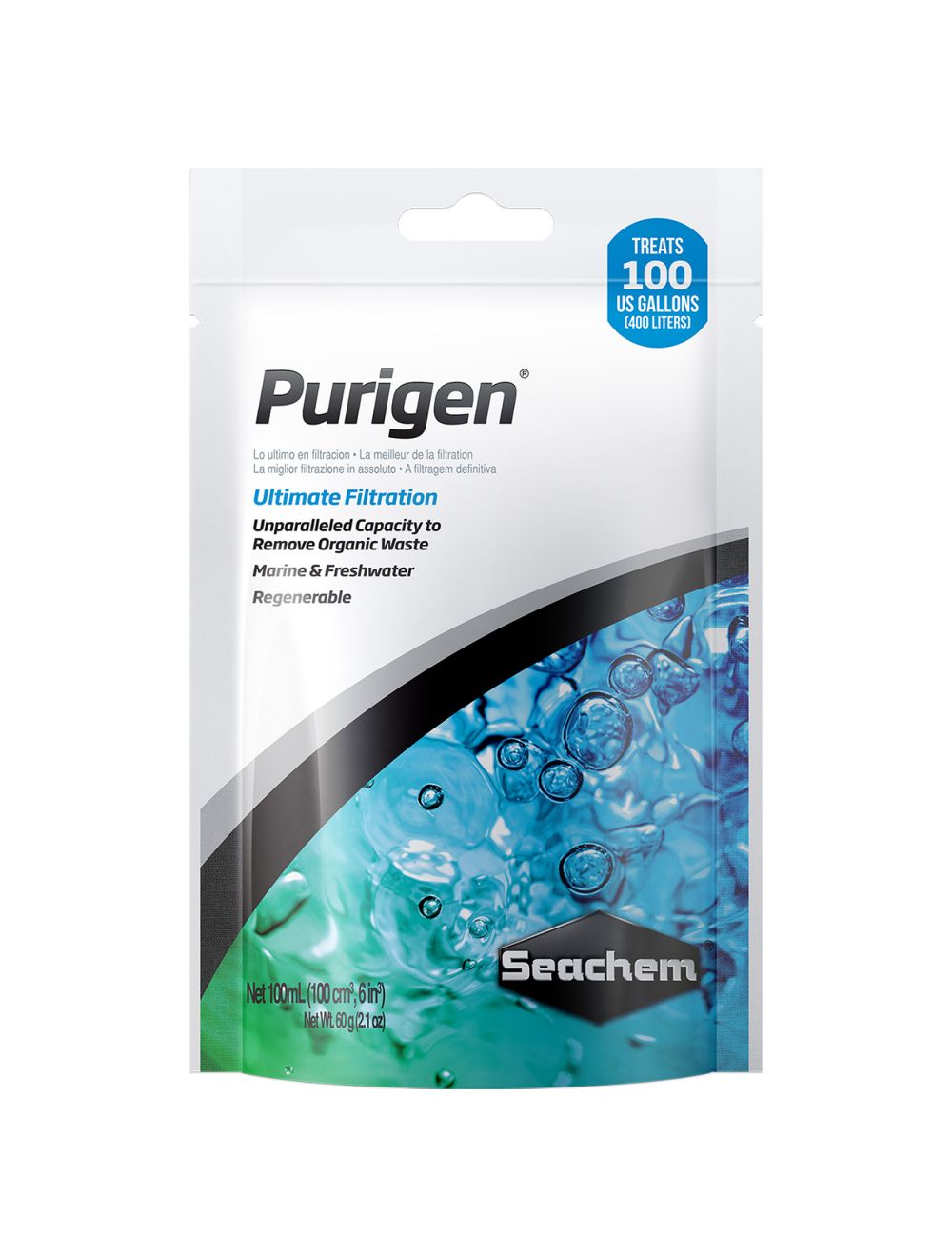Purigen
Purigen
Couldn't load pickup availability
- Unique macro-porous synthetic polymer that removes soluble and insoluble impurities
- Helps to control ammonia, nitrites and nitrates by removing nitrogenous organic waste
- Unparalleled ability to clear haziness and polish water
- Can be quickly and easily regenerated for long term use
- Suitable for use in freshwater and saltwater aquariums
The 100 ml container of Seachem Purigen is a tool that every hobbyist, both beginner and advanced, should have in their aquatic tool kit. It is a scientifically formulated premium synthetic adsorbent that is not a mixture of ion exchangers or adsorbents, but a unique macro-porous synthetic polymer that removes soluble and insoluble impurities from both freshwater and saltwater at a rate and capacity that exceeds all others competitive products by over 500%. The formula helps to control ammonia, nitrites and nitrates by removing nitrogenous organic waste that would build up and release harmful chemicals into your aquarium water column, negatively impacting all aquatic life within the aquarium. Though, Purigen's impact on beneficial trace elements in minimal, it significantly raises redox and polishes water with unparalleled clarity.
Seachem Purigen's ability to clear haziness and polish water is unparalleled in the market today. Unlike other available competitive products which are just basic ion-exchange resins, this solution is specifically designed to be an organic scavenging resin and generally ignores simple elemental compounds, having an extreme affinity for nitrogenous organics. Nitrogenous compounds come from aquarium waste produced by fish, coral as well as plants. The Purigen beads are uniquely spherical and macroreticular in shape and the increased surface area provide an enhanced capacity with microscopic pores that increase its usable surface area to many times that of other products on the market, which are made of purely spherical resin. The versatile product can be used in a wide variety of filtration applications such as in a canister filter, media chamber, box filter, or any high flow area of a trickle filter.
To add to the already incredibly functionality of this product, Purigen can actually be regenerated to retain efficiency and effectiveness in the long term. As it adsorbs waste products, the beads will change color from a pale blonde to a dark brown, nearly black coloration. Once it is exhausted, it can be regenerated with a solution of bleach and water. The bleach will literally "burn off" the organics that have been removed from the tank. Watch out for products that claim to be regenerable with a brine solution. That is the regeneration procedure for ion-exchange purposes. Brine solutions will not remove necessary harmful organics. While such resins have a limited capacity for organic adsorption, a brine regeneration process only replaces removed ionic compounds and it does not destroy large organic molecules that were removed, which is the primary function of organic adsorption resins in the first place.
Regeneration Instructions:
- Soak in a 1:1 bleach and water solution for 24 hours in a non-metallic container in a well ventilated area and away from children.
- Use regular 8.25% hypochlorite household bleach (non-scented, no dyes, do not use a splash-less bleach).
- Rinse well, then soak for 8 hours with a solution containing 4 tablespoons of Seachem Prime, or an equivalent dechlorinator per cup of water.
- Rinse well.
- For freshwater use, soak for 4 hours with a solution containing 2 tablespoons of buffer per cup of water (such as Seachem Discus Buffer or Seachem Neutral Regulator).
Original color and full activity should now be restored and Purigen is ready for reuse.
Caution:
There are some slime coat products that may permanently foul Purigen and make the regeneration process difficult or impossible. Do not reuse if odor of bleach/chlorine is detectable. In case of doubt, soak beads in small quantity of water and test for residual chlorine with a chlorine test kit.
Share


